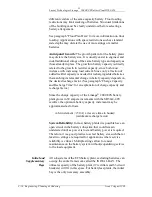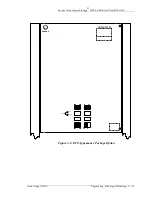
Lucent Technologies Lineage
®
2000 ECS Battery Plant H569-416
Issue 2 August 1996
Engineering, Planning & Ordering 3 - 13
Calculating
Voltage Drop
A useful formula to relate voltage drop, cable length and cable
size is:
VD = (K x I x L) / CM, or CM = (K x I x L) / VD
where:
VD = allowable voltage drop, in volts
CM = conductor size in circular mils
K = 11.1 for copper at 78°F (25.5°C)
I = appropriate current drain, in amperes
L = conductor length, in feet
The formula may be applied to one-way conductors or to loop
circuits (i.e., paired power and return conductors). The value of
K in the above expression increases with increasing conductor
temperature.
Conductor
Ampacity
Two criteria are used to select the actual wire gauge of a given
conductor. These two criteria are ampacity and voltage drop.
Ampacity is the current that may be carried safely without
overheating the conductor. In relatively low voltage/high current
systems, such as dc distribution, voltage drop limitations are
often the determining factors in sizing conductors. In systems
such as ac distribution, with relatively high voltage and low
current, ampacity usually determines minimum conductor size.
All conductors, however, must be large enough to carry the
intended current safely.
Allowable ampacity is provided in Article 310 of the NEC
(National Electrical Code), and it is a function of the following:
•
wire size,
•
ambient temperature
•
type of insulation, and
•
proximity to other conductors.
The ampacity tables are given in the National Electrical Code
(NEC), starting with Table 310-16. These tables, together with
the appropriate notes, determine the current that will result in the
















































